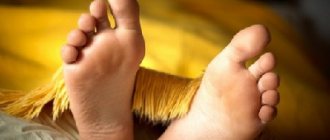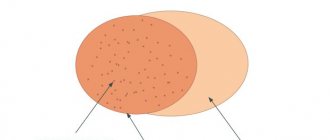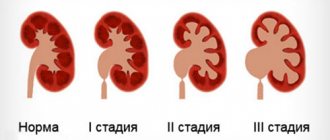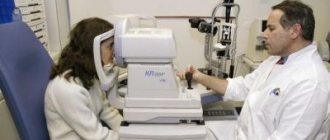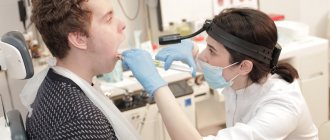Diagnosis of obsessive states. Symptoms of obsessive-compulsive disorder
Obsessive-compulsive disorder (OCD, or obsessive-compulsive disorder) is a person’s painful sense of self, in which intrusive thoughts, anxieties, doubts constantly arise and linger for a long time, as well as the same type of actions and movements are performed. And all this happens regardless of the person’s will, which is especially striking expressed during drug addiction rehabilitation.Let's look at the symptoms and treatment methods for OCD.
The classification of obsessive-compulsive disorders distinguishes three forms of the disease, having separate or mixed symptoms:
Obsessive-mental , associated with the thought process taking place in the patient’s head. Obsessions are the presence of obsessive states (thoughts or phobias) that spontaneously arise several times a day. These annoying thought processes, not related to the main activity, begin unexpectedly and against the will of a person. Can be worn in different directions. The patient is still able to restrain himself from realization, but he is unable to stop thinking:
Doubts - uncontrollable anxiety forces the patient to repeatedly check the action performed, in some cases to the point of losing physical strength;- Phobias (fears);
- Thoughts that constantly creep into your head. Pointless endless thoughts that cannot be interrupted at will. As a rule, they do not have a logical ending;
- Memories and mental images that appear without the patient's desire and related to past traumatic situations.
Obsessively effective. Compulsions require the performance of certain “protective” (thought-calming) rituals and consist of various repetitive actions and manipulations, as well as the desire to count, touch, rearrange objects or words. Sometimes they are carried out unnoticed by others or mentally, therefore they lead to absent-mindedness and slowness, which manifests itself when performing everyday duties. The most common compulsion is onychophagia - the desire to bite nails. Against the background of obsessive actions, depression, bulimia, anorexia, and uncontrollable cravings for drugs or alcohol may occur;
Mixed form - does not allow the patient to control actions and thoughts. Fully concentrating on rituals, he brings himself to physical exhaustion and moral exhaustion. In such cases, the patient needs urgent help, on which his life may depend.
Most often, people with a sensitive and suspicious nature are prone to obsessive states of fear, who worry about little things and trifles, and also analyze everything that happens. Almost any situation related to stress can give rise to the disease.
In addition to the main symptoms, there are often complaints of:
- persistent fear and anxiety about yourself or loved ones;
- increased frequency of blinking, convulsive winks and tics;
- persistent internal tension and constant struggle with the desire to repeat obsessive movements;
- increasing irritability and aggressiveness, including towards oneself;
- problems sleeping, inability to relax and rest (staying still for a long time);
- chills or sweating;
- tingling in various parts of the body;
- rapid heartbeat and shortness of breath;
- dry mouth;
- nausea and dizziness;
- uncontrollable muscle tension.
The disease can first appear in childhood, so the main task of parents is to monitor the psychological state of the child and react in time by making an appointment with a specialist. After all, the older the patient, the more inclined he is to be ashamed of the manifestations of the disease, and even more so in no hurry to acknowledge their existence. At the time of treatment, you may need additional treatment for addiction that has arisen due to obsessive-compulsive disorder.
Like any illness in psychiatry, obsessive-compulsive disorder requires treatment, so there is no need to succumb to inappropriate shame and, without delay, it is important to contact a specialist for the necessary help. It is early diagnosis that allows you to identify the causes of obsessive-compulsive disorder as soon as possible and gradually eliminate them. Often, the disease arises from a combination of genetic and environmental factors, realized under the influence of external or internal triggers.
Examples of obsessive-compulsive disorder most commonly diagnosed in patients include creating specific rituals that have a specific number of movements. Despite the efforts and temporary calm, all this is perceived by the person quite painfully, aggravating his already serious condition.
Undoubted risk factors for the occurrence of various types of obsessive states include:
- situations where the patient was abused as a child;
- mental illnesses and conditions transmitted by inheritance. This suggests the need to develop an individual scenario for the treatment of mental disorders;
- features of living conditions that are far from ideal, including poverty and living in unfavorable areas, that is, constant exposure to stressful conditions;
- presence of diseases: endocrine, infectious or chronic somatic pathologies;
- the use of narcotic and psychoactive substances is also one of the reasons, so treatment of drug addiction, nicotine or alcohol addiction will be an integral part of complex therapy.
Modern diagnosis of OCD occurs as follows:
- conversation with the patient;
- examination by a neurologist;
- examination by a psychiatrist;
- test for obsessive-compulsive disorder using Neurotest, Yale-Brown scale and other types of testing.
The diagnosis is made if obsessions and/or compulsions occur every day and last from 1 hour a day, interfering with a person’s normal life. There are cases where patients with obsessive-compulsive disorder are misdiagnosed as schizophrenia or schizotypal disorder, leading to improper treatment, loss of time and money, and progression of symptoms. Patients who seek help from the Renaissance rehabilitation center are fully insured against such unprofessionalism. The key to success in the effective treatment of each patient is the early and correct diagnosis of OCD.
Diagnosis of OCD
Accurate assessment of obsessive-compulsive disorder is critical due to its underdiagnosis, the difficulty of establishing an accurate diagnosis, and the need for careful and specific treatment planning and evaluation. Obsessive-compulsive disorder in adults: The OCD test. A person suffering from obsessive-compulsive disorder may become obsessed with germs or their safety, and may find relief from associated anxiety only by performing rituals, such as repeated hand washing or ritually locking and unlocking doors. If you think you may have obsessive-compulsive disorder, take an obsessive-compulsive disorder test to determine whether your symptoms require a visit to a qualified health care professional. An accurate diagnosis can only be made through clinical assessment.
Obsessive-compulsive disorder (OCD) in adults is characterized by three signs or symptoms:
- Obsessions, which are unwanted thoughts, images, or urges that cause distress;
- Compulsions, which are repeated actions or thoughts that a person uses to neutralize or counteract negative feelings or thoughts;
- Anxiety or obsessive-compulsive disorder may be diagnosed if someone has obsessions, compulsions, or both. Because obsessions and compulsions can take any form, and OCD varies greatly in severity, diagnosis can be difficult and usually requires a specialist who can properly diagnose the conditions.
If the symptoms of obsessive-compulsive disorder are not treated, they may worsen, which may lead to the development of undesirable consequences. The good news is that once an accurate diagnosis is made, most patients undergoing treatment report an improvement in their obsessive-compulsive disorder symptoms.
If you suspect you have obsessive-compulsive disorder, the Yale Brown Test can help you confirm or disprove your suspicions.
What's new in the treatment of obsessive disorders abroad?
Foreign clinics offer their patients complex therapy combined with hypnotic relief from OCD.
Diagnosis and treatment in each case is carried out individually, without radical rejection by the patient’s sensitive psyche:
- Medication prescription is consistent with taking into account the characteristics of obsessive states, gender and age of the patient, as well as the presence of a history of other diseases.
- Behavioral psychotherapy is based on the patient’s trust in the doctor and the selection of the optimal type of influence and contact.
- Social rehabilitation takes place in combination with psychotherapeutic sessions. Helps patients return to rational behavior not only while in the hospital, but also in an atmosphere familiar to them. Social skills of contact with other people are restored or stimulated.
Drug treatment and psychotherapy
There are several approaches to treating OCD. The most well-known is drug treatment. It is carried out according to a clear protocol generally accepted in the world: they start with the first-choice drugs, and if the drug does not work in maximum doses, a second drug is prescribed and its effectiveness is assessed for a certain time, and so on until the result is achieved.
The main group of drugs for the treatment of OCD are selective serotonin reuptake inhibitors. These drugs are usually used in higher dosages than those used to treat depression. The effectiveness of treatment is assessed after 8–12 weeks, which is significantly later than the standard for anxiety or depressive disorders (6 weeks). If serotonin reuptake inhibitors do not work, another drug is used, the tricyclic antidepressant clomipramine, which has shown very high effectiveness in treating OCD in many studies. Atypical antipsychotics may also be used in combination with antidepressants. With properly selected therapy, symptoms can become significantly less intense or stop altogether.
In addition, psychotherapeutic treatment is widely used for OCD. Cognitive behavioral psychotherapy has proven its effectiveness here. The psychotherapy process involves discussing the idea that people often suffer from anxiety when they perceive situations as more dangerous than they actually are. Effective cognitive work helps a person formulate an alternative, less threatening interpretation of what is happening, which coincides with his life experience and the ideas of other people. Subsequently, cognitive behavioral therapists use exposure and response prevention techniques to test these new interpretations. For example, a person with a fear of infection, who is afraid to touch surfaces in public places, together with a therapist, voluntarily holds his hand on such a surface for 10 seconds. At this moment, he experiences strong anxiety and a strong desire to realize compulsion - to remove his hand and go wipe it with alcohol. Together with the therapist, the patient plans that he will not react in this way, hold it for 10 seconds and not go wash his hand. When such actions are repeated many times, the anxiety the tenth time is much less than the first time, and if this is done a sufficient number of times, the anxiety can be generally reduced. Many modern studies suggest that psychotherapy is a more effective treatment method than pharmacotherapy, with fewer relapses.
For very severe or long-term disorders, drug treatment or psychotherapy alone does not give the desired result. Then a combination of medication and psychotherapeutic treatment will be effective.
Advanced approaches to the treatment of obsessive-compulsive disorder in Israel
When choosing treatment in Israel, patients cured of OCD speak well of the Renaissance RC. It is here that the most productive treatment methods to date are used as part of an integrated approach that combines progressive psychotherapy and the safest possible drug treatment.
Additional psychotherapeutic techniques are also used:
- art therapy;
- music therapy;
- sports activities;
- hydrotherapy and others.
Find out the cost of treatment for obsessive-compulsive disorder
Prices for the treatment of this disease in Russia depend not only on the professionalism of the doctor, but also on her status, regalia of doctors, distance from the center of Moscow or St. Petersburg and other factors. Prices for appointments with private psychiatrists and psychotherapists start from 1,500 rubles; a similar service in a more well-known clinic will cost you from 4,000 rubles. At the same time, the price for OCD treatment is usually not publicly available, but is announced individually, depending on the complexity of the case. Unfortunately, low prices do not guarantee effective treatment. It is often more profitable to immediately turn to Israeli specialists, known for their high effectiveness in treating various mental deviations.
Read reviews about treatment for obsessive-compulsive disorder
“My husband and I are very pleased with the results of our son’s treatment. We noticed manifestations of obsessive states in him, these were the consequences of severe fright after the accident. They did not self-medicate, but turned to the Renaissance RC. The doctor quickly found a common language with his son, although he doesn’t particularly like strangers. After the sessions and following the recommendations, the son became much calmer. He's starting school this year and I think the therapy has done him good.”
Elena Anisimova, Nizhny Novgorod
“I probably have a relatively advanced case. There were repeated attempts to cope with the disease on my own and under the supervision of doctors, but local specialists did not help me much in this, although I tried my best. The last hope for me was going to the Renaissance clinic. During the treatment I noticed immediate progress. I don’t want to stop there and plan to finally get rid of OCD. Thanks to the specialists who were able to understand the reason, help me understand myself and learn to react more calmly to stimuli.”
Ivan Kukharchuk, Izmail
PSYCHOLOGICAL COUNSELING and PSYCHOTHERAPY
The total duration of your obsessive thoughts (obsessions) during the day is:
0.not observed at all
1.total less than an hour
2.in total 1-3 hours during the day
3.in total 3-8 hours during the day
4. cumulatively more than 8 hours during the day
The degree of disruption to daily life due to intrusive thoughts:
0. not broken at all
1. Slightly damaged
2.negative influence is felt, but the same lifestyle
3.everyday lifestyle is severely disrupted
4.lifestyle is completely disrupted
Level of psychological discomfort due to obsessive thoughts:
0.I don’t feel it at all
1.I experience slight discomfort
2.I experience severe discomfort, but in general I feel good
3.I experience severe discomfort and this affects my well-being
4.I experience very strong discomfort almost all day
Resistance to obsessions (intrusive thoughts):
0.able to resist them almost always
1. I can resist most obsessions
2.sometimes I can give them good resistance
3.most often I cannot resist them
4.unable to resist obsessions
Degree of control over obsessions (obsessive thoughts):
0.obsessions are completely under my control
1.in most cases I control them
2.sometimes I manage to control my obsessions
3. I can control them slightly
4.my obsessions are uncontrollable
Your duration of obsessive actions, rituals (compulsions) during the day:
0.not observed at all in the aggregate for less than an hour
1.in total 1-3 hours during the day
2.in total 3-8 hours during the day
3. cumulatively more than 8 hours during the day
Degree of disruption to daily life:
0.do not violate at all
1.have little influence
2.negative influence is felt, but the same lifestyle
3.severely disrupt daily life
4.lifestyle is completely disrupted
Level of psychological discomfort:
0.I don’t feel it at all
1.I experience slight discomfort
2.I experience severe discomfort, but in general I feel good
3.I experience severe discomfort and this affects my well-being
4.I experience very strong discomfort almost all day
Resistance to compulsions (obsessive actions, rituals):
0.able to resist them almost always
1. can resist most compulsions
2.sometimes I can give them good resistance
3.most often I cannot resist them
4.unable to resist compulsions
Degree of control over compulsions
0. compulsions are completely under my control
1.in most cases I control them
2.sometimes I manage to control compulsions
3. I can control them slightly
4.my compulsions are uncontrollable



